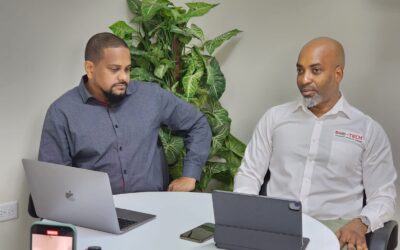Last week, we spoke about the Strategic Phase, and this week we speak candidly about the Planning Phase of becoming Globally Competitive. These are five key takeaways coming out of that conversation we shared on our social media platforms.
If you missed it, then listen to it here- The Planning Phase
5 KEY TAKEAWAYS FROM THE PLANNING PHASE OF BECOMING GLOBALLY COMPETITIVE
1. CREATING THE RIGHT TEAM
The first, when it comes to the planning phase is creating the right team. And what I mean by that is not just a team focused on the executive body of the organization. It needs to be a team that covers all levels within the organization, executives, management, technocrats, multi-disciplined, multi-skilled. The reason for that is because you want different perspectives of what is going on in the organization. You want the buy-in throughout the organization. And the best way to get that is to ensure that you allow as many different levels within the organization to contribute to the conversation.
2. UNDERSTAND THE VALUE PROPOSITION
Secondly, when looking at the planning phase of becoming globally competitive is understanding the value proposition. And this ties in so nicely with our discussion where we showed the linkage between the strategic phase, moving into the planning phase.
With the value proposition, you have to understand your current value proposition, where we are now, and what is the value we’re bringing to our customers. And through innovation, you have to then look at what your targeted state for your value proposition is. This conversation directly extends out of the strategic phase. This is key because you need to always know where you are going and where you are taking the organization.
3. UNDERSTANDING YOUR CURRENT STATE
The third key element is understanding the current state of your organization. You start with a diagnostic of your organization. What I mean by this is, in some organizations if they are small, the diagnostic can take place from a very holistic level, but in larger organizations, you need to segment it by department or by division. Once you’ve done that segmentation, you now need to identify all the operational processes that will take place within each respective department or division. And then, through your diagnostic, analyze the workflow process and analyze the efficiency levels that take place. Because this phase is where you can set your performance baseline.
Where are we at now?
How are we performing now?
And, again, linking back to your strategic phase, have an appreciation of where you’d like to take your organization. What is the targeted state for performance? How can we ensure that all of these performance metrics that we have captured in our current state are met when we achieve that future state? That is such a key element when it comes to this entire exercise of the planning phase.
4. ANALYZE YOUR CURRENT DIGITAL SOLUTIONS
The fourth element is analyzing your current digital solutions. What we discussed in our live session, is that we’ve noticed quite a lot of organizations may have a vision of what they would like to have their digital environment look like, but they are still quite archaic in what they have in their environment.
By analyzing this current digital solution environment, we’re now able to ascertain if it’s simply an upgrade that is required. Sometimes the laundry list of things that are needed to achieve that targeted state can easily be achieved through an upgrade of the software that you have in your environment. Perhaps it may require the acquisition of a different piece of application that may be in the commercial space, or a complete build-out to achieve the vision that you would have for your organization.
5. THE COMMUNICATION PLAN
And finally, and I think for me from the experiences that I’ve had, this is such a critical element, the communication plan. That is the vehicle that drives the entire exercise.
How do we communicate?
How do we ensure that all the relevant stakeholders’ voices are heard? How do we ensure that there is the achievement of the vision that we want in the targeted state?
That can only happen with a proper, sound communication plan. Getting the relevant feedback on time, making sure that the changes that need to take place, making sure that everyone’s voice is heard so that at the end of it all, that desired targeted state meets each person’s requirements. We can therefore ensure that we have an organization that buys into the ultimate strategic objective.
These 5 takeaways are the critical steps of your planning phase for your organization to become globally competitive. Join us every Thursday at 2 pm on our Facebook or Linkedin pages to be part of this exciting conversation.
Our Blog
Exciting Update: Our New Commitment to Cybersecurity for SMEs
We're thrilled to announce a significant transformation in our services! Starting January 2024, we have shifted our focus from general technology support to a specialized commitment to cybersecurity for small and medium-sized enterprises (SMEs). This strategic change...
Elevating Your Cybersecurity
In an era dominated by technology, cybersecurity isn't just a buzzword; it's a critical necessity. The modern business landscape demands a proactive approach to protecting your data and infrastructure from an ever-evolving threat landscape. ? Why You Need to Take...
Innovative Solutions for Enhanced Productivity!
A valued client recently approached us with a unique challenge: the need to boost employee productivity while ensuring accurate time and billing management. They'd explored various off-the-shelf solutions but couldn't find one that perfectly aligned with their...
The Power of Structured Databases: Why Excel Isn’t Always the Best Choice
While Excel remains a valuable tool for basic data organization, it may not always be the optimal choice for storing and collating large, complex datasets. Structured databases offer scalability, data integrity, security, efficient analysis, collaboration, and long-term maintenance capabilities that can enhance productivity and enable data-driven decision-making.
Unleashing Business Potential: Join Us to #BridgetheGap and Experience Positive Transformation
At 800 TECH, we believe in empowering businesses to unlock their full potential and bridge the gap to a more streamlined and successful future. By joining forces with us, you can experience a range of positive transformations that will propel your business towards new...
Transforming Trinidad and Tobago’s Financial and Export Sector with 800-TECH
Once upon a time, in the vibrant financial and export sector of Trinidad and Tobago, an organization had been making its mark for over three decades. As a pioneer in the industry, they faced the challenge of outdated technology that hindered their operations. It was...
Bridging the Gap: Conquering Technology Fears – A Three-Step Strategy
In today's rapidly evolving digital landscape, the divide between technology and businesses has become a significant challenge, particularly in the financial sector. Many businesses are hesitant to embrace technology due to their fear of the unknown. While financial...
Safeguarding Your Business Secrets with Technology: A Strategic Approach for Business Owners
As business owners, we often become consumed by the day-to-day operations of our companies. Inadvertently neglecting the technology that drives our businesses forward. However, it is crucial to recognize the significance of managing deployed technology, safeguarding...
A simple way to automate your petty cash
“Petty cash is simply any physical cash your business keeps on hand to pay for small, unplanned expenses.” A simple way to automate your petty cash is by using our E-Flow solution. E-Flow helps to automate this process and ensures every purchase is tagged...
Data Protection Services – The 3 Pillars
Let's look at how you can safeguard all of the data you have collected because this is the pulse and lifeblood of your organization. There are three pillars that we utilize in the deployment of our Data Protection Service. They are: Prevention Mitigation...










